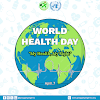In our last article, we discussed how rare–and scarce Water really is.
No doubt then that if we must sustainably utilise the little amount of available water to us, sectors, individuals and all users, must begin to manage water resources.
The sectors that require sustainable water management, are the same sectors that consume water and water resources the most.
These sectors generate, treat, use and dispose of a wide range of different qualities of water.
They include, but are not limited to;
– Agriculture Sector
– Food processing Sector
– Energy Sector
– Manufacturing Sector
– Domestic and Household
- Agriculture Sector
According to 2023 Builders, "70% of the world’s freshwater is used for agriculture." That figure right there is a whole lot. This is as a result of the different water consuming operations that Agriculture involves.
Irrigation requires a large amount of water, especially in arid regions where thirsty crops like wheat, rice and sugarcane, are grown.
Production of fruits and vegetables is another high consumer of water.
Fertiliser application and pesticides application does not only require a large quantity of water, but pollutes even a larger amount, under a poor water management system.
The production of meat and other animal products such as dairy and eggs, are known to have negative environmental impacts like, emission of greenhouse gases. They also consume and pollute a significant amount of water. According to 2030 Builders, "it takes 15,000 litres of water to produce 1 kilogram of meat."
- Food Processing Sector
The processing of raw food produce into finished and semi-finished food products, entails transformative and cleaning activities that require water at different stages.
Breweries and beverage producing industries also carry out processes that both consume and pollute water resources. "It takes 350 litres of water to produce one litre of soda, while one litre of beer requires 155 litres of freshwater."
- Energy Sector
A study by E. S. Spang et al. (2014) estimated that, "the world’s energy production consumes approximately 52 billion cubic metres of freshwater "annually".
This is because the cooling processes of power plants require a large volume of water. Bioenergy crops like sugarcane are also thirsty crops that require a large amount of water in their production.
- Manufacturing Sector
Garment and textile production requires a significant volume of water in the different stages it entails, from textile crops production to designing and dying. 2030 Builders say, "it takes 7,000 litres of water to produce one pair of jeans, the same amount one individual drinks in 5-6 years."
Automotive manufacturing industry is another high consumer of water. "It takes around 148,000 litres of water to produce a car. Producing one tire only requires close to 2,000 litres."
- Domestic and Household
Daily running of a home results in consumption, polluting and wasting a large volume of water, especially in households where members are not ecologically conscious.
For water and water resources to be sustainably used, the above sectors need to reduce water consumption, pollution and wastage by;
— Engaging smart technology and irrigation management,
— Utilising better supply chain procurement and management,
— Using renewable energy sources,
— Utilising natural ecosystems to manage water resources, and
— Maintaining and repairing pipes as soon as a leak or fault is detected.
Ultimately, it falls to the individuals. Since individuals are the leaders and workers in these sectors, the responsibility to know about sustainable water management and work towards achieving it is part of their responsibility.
Sustainability is not a single man's job.
— Iyanuoluwa Grace











.jpeg)






0 Comments